STELLATUS (L.) Rafinesque, 1817
Synonyms :
Sedum stellatum L. (1753) / Anacampseros stellata (L.) Haworth (1812) / Asterosedum stellatum (L.) Grulich (1984)
Sedum uniflorum Rafinesque (1810) / Phedimus uniflorus (Rafinesque) Rafinesque (1817)
Sedum deltoideum Tenore (1815)
Subgenus Phedimus
Distribution : Central and eastern Mediterranean Region (southern France, Italy, Balkan, Greece, Turkey); naturalized in England (Somerset).
Description (according to 't Hart & Bleij in IHSP, 2003) :
Annual glabrous herbs with erect or ascending stout, simple or branched, sometimes papillose (upper part) stems 3 - 15 cm long.
Leaves opposite or sometirnes alternate in the upper part, shortly petiolate or spatulate, obovate to orbicular, 7 - 20 mm, entire, sparingly crenate or bluntly dentate, sometimes papillose.
Inflorescences dense cymes with (1-) 5 - 15 (-25) flowers on (1-) 2 - 3 (-4) usually simple cincinni, bracts large, spatulate to oblong, ± 5 mm.
Flowers (4- to) 5-merous, (sub-) sessile, sepals basally connate to 1 mm, erect, broadly linear to lanceolate, papillose at the tip, 4 - 6 mm, petals basally free, oblong, broadly mucronate, 4 - 5 mm, white, pink or purplish-red, anthers red.
Cytology : 2n = 10
Artificially obtained hybrids with P. stoloniferus (2n = 13) were annual and sterile.
The name refers to the fruit rather than the flowers. (R. Stephenson)
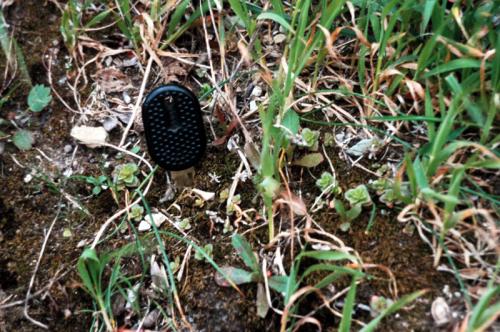
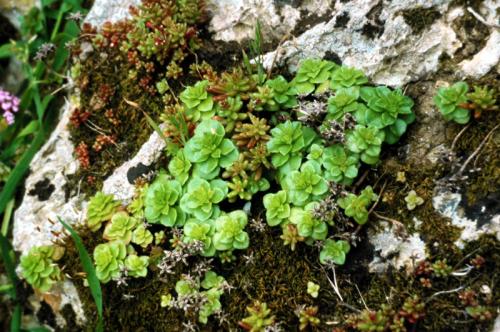
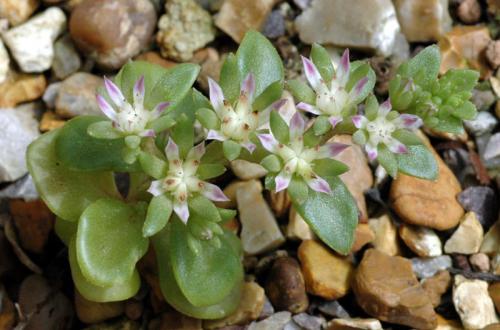
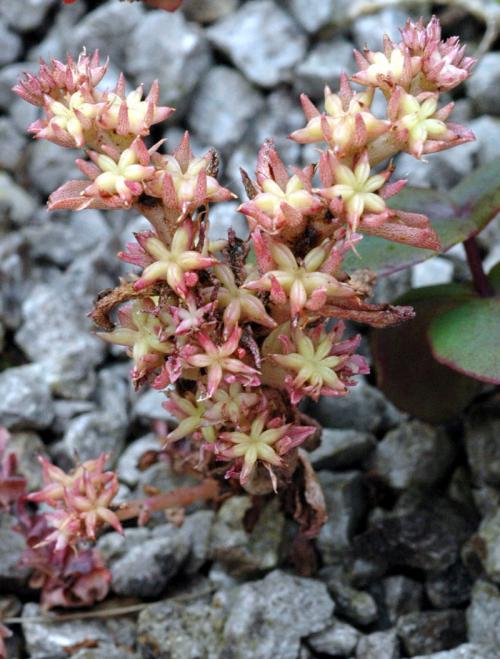
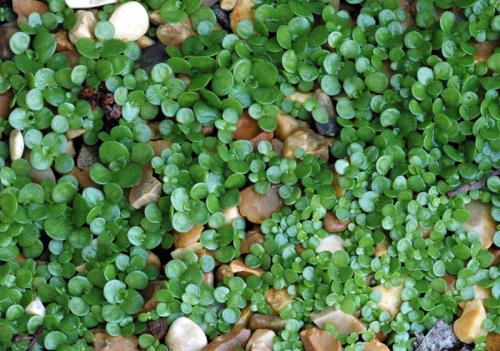
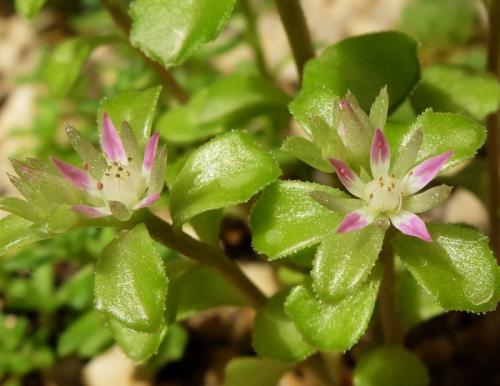
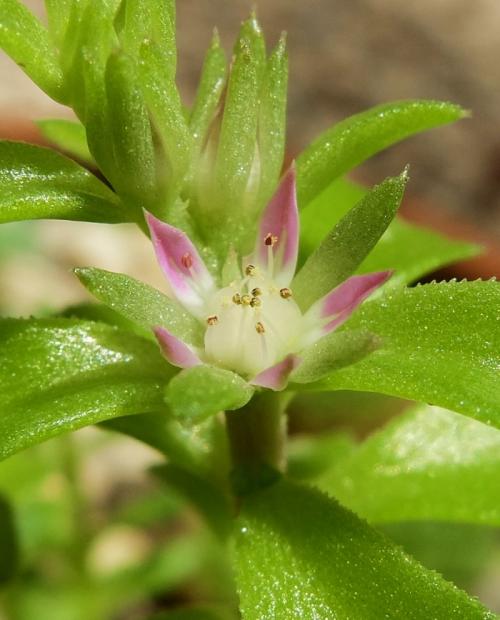
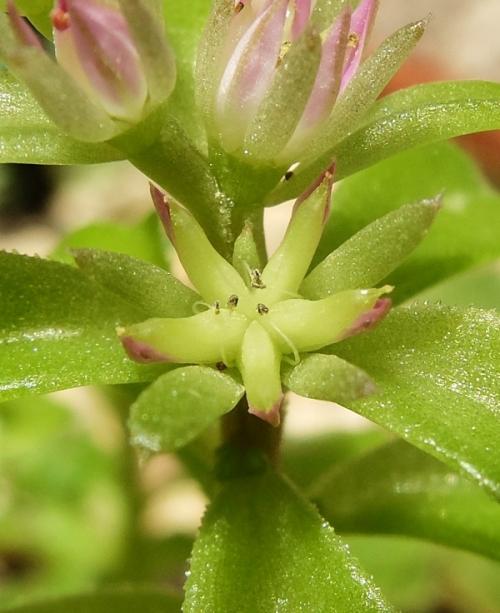
Photos Thomas Delange